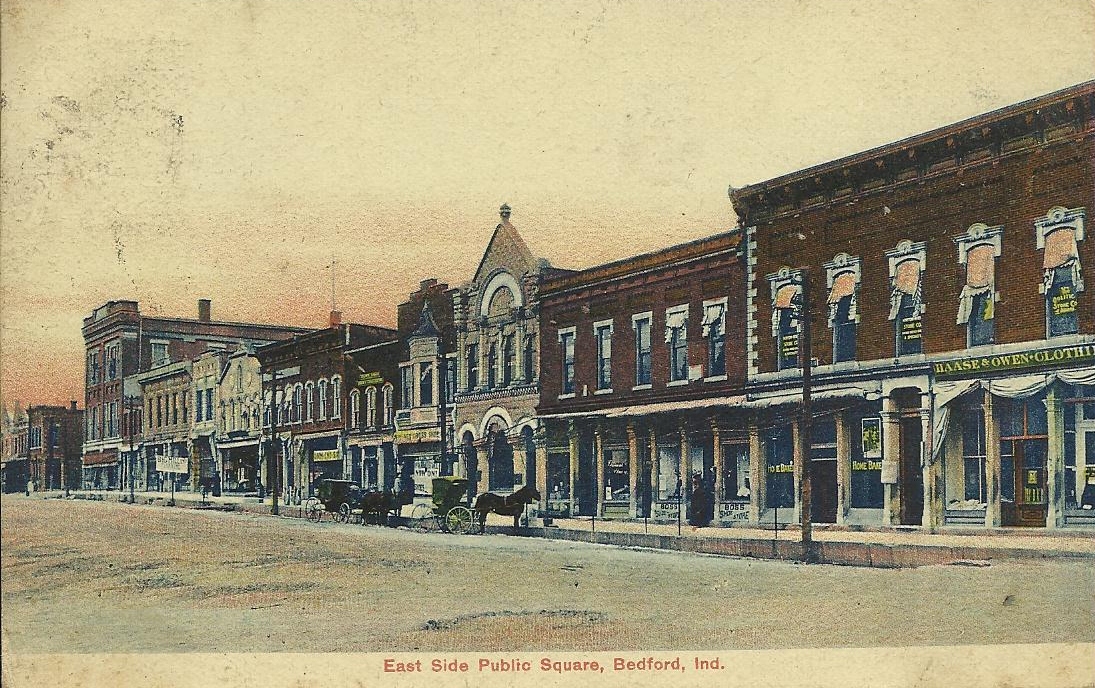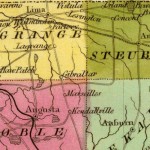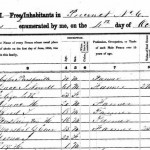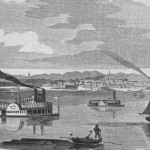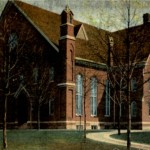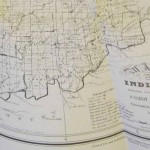Bedford became the Lawrence County seat after Palestine lost its bid for the designation and became a ghost town.
Although many of Indiana’s towns and cities owe their location to geography, topography, or economics—the coordinates of other urban centers were determined by state law.
Town boosters competed fiercely for the designation of county seat during the nineteenth century. More than half of the 92 county seat towns and cities of Indiana were planned as county capitals. State law gave preference to a central location within the county, and also specified that most counties be approximately 20 miles square—a size based on whether a taxpayer could travel from the county’s margin to its centrally located county seat and return the same day. Anything smaller than 400 square miles would not have generated enough taxes to pay for itself.
Potential county seats touted their population, excellent drainage, nearby water supplies, and good-quality land; sometimes residents offered donations for building a courthouse to sweeten the deal. But towns that did not grow large enough could lose their designation as county seat. In 1878, Jeffersonville snatched the county seat from Charlestown; in 1873, Richmond grabbed it from Centerville.
Palestine, in Lawrence County, was established on a hilltop commanding so fine a view that its promoters expected it to be the chief town of the county. But the fine view did not compensate for relative inaccessibility by road and for inadequate water supply.” Palestine, not easily accessible by road and with an inadequate water supply, suffered an epidemic, lost its bid for county seat, and became a ghost town.
Source: Stephen S. Visher, “The Location of Indiana Towns and Cities,” Indiana Magazine of History 51, no. 4 (Dec. 1955): 341-346.
A Moment of Indiana History is a production of WFIU Public Radio in partnership with the Indiana Public Broadcasting Stations. Research support comes from Indiana Magazine of History published by the Indiana University Department of History.










